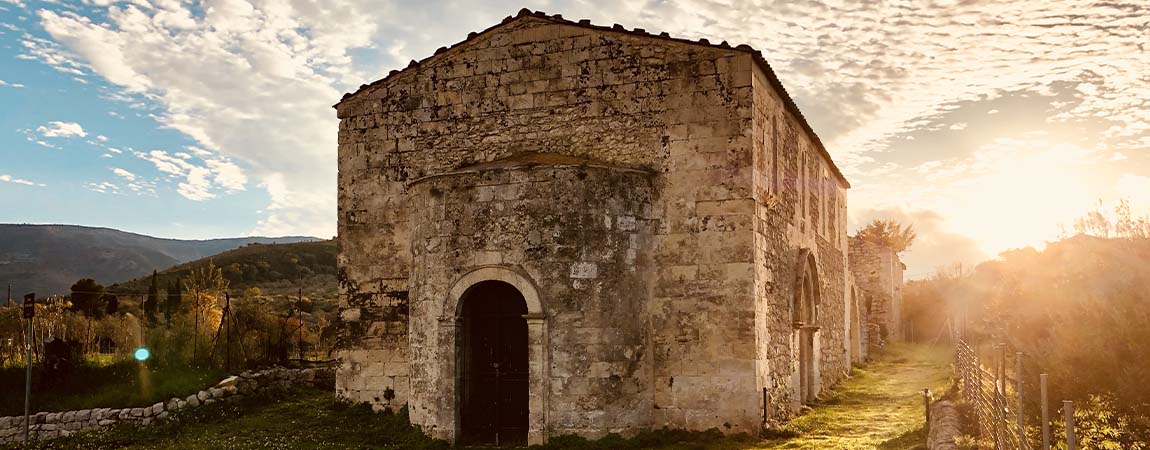
When we talk about the history of Buccheri we refer to a town located in the southern hinterland of Sicily, in the province of Syracuse, located on the northern slopes of Monte Lauro, part of the Iblei Mountains.
It is a municipality located at an altitude of 820 meters above sea level, even if the maximum height reached in some parts is even 986 meters above sea level, it is no coincidence that we are talking about the most top of the province.
In recent years Buccheri, as medieval village, has received various important awards, such as those of 2021 'Most beautiful village in Sicily", "One of the most beautiful villages in Italy' and 'Borgo dei Tesori'; in reality, already a few years earlier, that is in 2015, the town had been nominated 'World Capital of Quality Extra Virgin Olive Oil', again in 2021 as 'World's Best Culinary Destination' and in 2022 as the 'Oil City'.
Well yes, the olive groves and the olive harvesting activity are the masters here, also because the local territorial administration has been able to manage well and enhance the landscape riches of the Mount Lauro and those offered by the earth.
Discovering the history and origins of Buccheri
There are no certainties about the origin of the name but only hypotheses, in fact it is thought that it may derive from the Arabic, or from the Sicilian, which in turn derives from the ancient French, or still could derive from the ancient Greek; what is certain is that in all these cases the equivalent word has to do with bovine animals or cattle herd breeders, a situation that is not unusual in these parts, indeed, this is one of the most widespread activities.
It was said that Buccheri rises in altitude, the highest inhabited areas of the country belong to the historic center of the Castle, just below the Monte Castello, but there is also the inhabited areas of Contrada Piana Sottana, the highest in the municipality as it is 910 meters above the sea level.
On beautiful sunny days, when there is no mist, from Monte Castello it is possible to admire a vast panorama that goes from the Gulf of Catania to the mountains of the internal part of Sicily, in the Enna and Caltanissetta area. However, there is also another beautiful vantage point, the one on the Mount Calvary, where is the Sanctuary of the SSCrocifisso, facing the Etna volcano.
As for the history of Buccheri, we can begin by saying that many populations have passed through these parts, i.e. i Greeks, Romans and Byzantines, but also the Arabs and Normans, the latter have strengthened the territory and left them testimonies such as the Buccheri Castle which was built by the Normans and today we can admire the remains.
The very ancient origin of this village is also testified by the presence of some pastoral huts which have fueled the construction of a myth about the very first populations who settled in the place. The first lords of the village arrived here in 1088 and belonged to the Paternò family.
The first inhabited houses were built around the Castle and along the crest of the hill, in what are now the districts of the Badia and Casale. The first church was built in 1212 and was that of S Antonio, while in 1453 the monastery of S. Benedetto was built. Over the centuries, the town developed towards the south, of course, the serious earthquake of 1693 was a moment of almost total destruction of the territory, but the town managed to get back up with determination.
The Mother Church of Buccheri is that of Sant'Ambrogio, its patron saint.
Important and therefore worth visiting in Buccheri are also other churches such as the Shrine of Our Lady of Grace, Church of S. Maria Maddalena and the cave of St. Nicholas which houses a Christian church carved into the rock and of very ancient origins, the same presents inside the fascinating frescoes.
Not only did he ask Buccheri, but also the neviere
Neviere are those caves that once formed naturally thanks to the presence of stones and the incessant flow of river waters that formed real empty quarries inside and therefore useful for storing something... but what?
Certainly the very common snow in these parts, that snow which already in the early 1600s became an object of collection, conservation and trade, after being broken up into pieces of ice so much in demand for use in medicine (initially) and for the creation of food, such as the delicious jasmine or lemon sorbets, a real fashion in the noble lunches of that period.
Ice was so useful that the neviere began to be built specifically by man to be able to respond to market demand; in the period of greatest activity, 30 neviere had been created, but the same was not lasting, they were then abandoned, already starting from the 30s there were only 1900, as if to underline the end of a an activity that was now on the verge of extinction, even if it still remained in the historical memory of this territory.
Why visit Buccheri
Going to discover the history of Buccheri means immersing yourself in a unique and surprising journey, made up of natural, architectural and cultural peculiarities under the banner of a well-assorted mix in which, as mentioned before, the tourist not only discovers buildings and monuments that are certainly worth visiting, but also the pleasant gastronomic moments typical of this village.
© Davide Mauro, CC BY-SA 4.0









